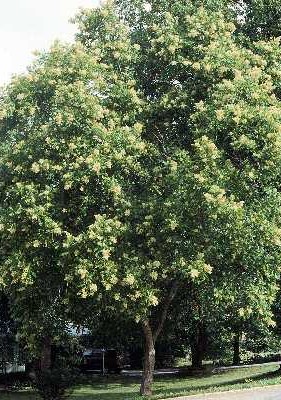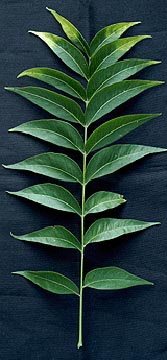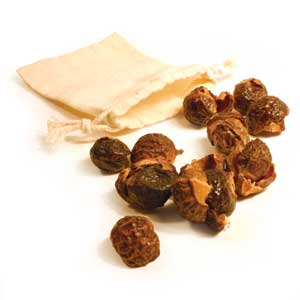Sapindus Mukorossi .com
- The Complete Soapnut Guide!
Soapnut, soapnut, SOAPNUT, Soapnuts, soapnuts,
SOAPNUTS, Soap Nuts, soap nuts, SOAP NUTS, Soapberry, soapberry, SOAPBERRY,
Soapberries, soapberries, SOAPBERRIES, Washnut, washnut, WASHNUT, Wash Nut, wash
nut, WASH NUT, Sapindus Mukorossi, sapindus mukorossi, SAPINDUS MUKOROSSI, Sapindus
Mukorosse, sapindus mukorosse, SAPINDUS MUKOROSSE, Maggies, MAGGIES, maggies,
Bulk, bulk, BULK, Order, order, ORDER, Buy, buy, BUY, Organic, organic, ORGANIC,
Natural Soap, natural soap, NATURAL SOAP, Hypoallergenic, hypoallergenic,
HYPOALLERGENIC, Washnuts, washnuts, WASHNUTS, Wash Nuts, wash nuts, WASH NUTS,
Soap Nut, soap nut, SOAP NUT, Juice, juice, JUICE, Liquid
Translate: [Spanish]
- [German]
- [French]
- [Arabic]
- [Chinese]
- [Japanese]
- [Dutch]
- [Russian]
- [Greek]
- [Italian]
- [Korean]
- [Hindi]
Sapindus Mukorossi . com - The Complete Soapnut Guide!
 A deciduous tree found wild in north India, usually with 5-10
pairs of leaves, solitary with large drupes. This tree belongs to the main plant
order Sapindaceae and family Sapindeae. The species is widely grown in upper
reaches of the Indo-Gangetic plains, Shivaliks and sub-Himalayan tracts at
altitudes from 200m to 1500m. Also known as soap-nut tree, it is one of the most
important trees of tropical and sub-tropical regions of Asia. A deciduous tree found wild in north India, usually with 5-10
pairs of leaves, solitary with large drupes. This tree belongs to the main plant
order Sapindaceae and family Sapindeae. The species is widely grown in upper
reaches of the Indo-Gangetic plains, Shivaliks and sub-Himalayan tracts at
altitudes from 200m to 1500m. Also known as soap-nut tree, it is one of the most
important trees of tropical and sub-tropical regions of Asia.
This tree flourishes in deep clayey loam soil and does best in areas
experiencing nearly 150 to 200 cm (60 to 80 in) of annual rainfall. The trunk is straight and
cylindrical, nearly 4 to 5 m (13 -16 ft) in height. The canopy comprising side branches and
foliage constitutes an umbrella-like hemispherical top measuring about 5 m (16
ft) in
diameter. The tree can reach a height of 25 m (82 ft) and a girth of 3 to 5 m
(9-16 ft) in nearly
70 years of its existence. The wood is hard and light yellow in color. It is
close-grained and compact weighing about 30 kg (66 lbs) per cubic foot. The wood is
utilized for rural building construction, oil and sugar presses, and
agricultural implements.
It flowers during summer. The flowers are small and greenish white, polygamous
and mostly bisexual in terminal thyrses or compound cymose panicles. These are
sub-sessile; numerous in number and at times occur in lose panicles at the end
of branches. The fruit appears in July-August and ripens by November-December.
These are solitary globose, round nuts 2 to 2.5 cm (1 in) diameter, fleshy, saponaceous
and yellowish brown in color. The seed is enclosed in a black, smooth and hard globose endocarp. The fruit is collected during winter months for seed and/or
market sales as "soap nut".The Sapindus Mukorossi tree is one of several that
bear fruits that are commonly referred to as soap nuts, of them the soapnuts
from the Sapindus Mukorossi tree have the highest saponin content. Saponin is a natural detergent
commonly used for cleaning among many other things. Soapnuts have been used medically as an expectorant,
emetic, contraceptive, and for treatment of excessive salivation, epilepsy,
psoriasis, head lice and migraines. Studies have shown that saponin from soap nuts
inhibit tumor cell growth. Soap nuts are among the list of herbs and minerals
in Ayurveda. They are a popular ingredient in Ayurvedic shampoos and cleansers.
They are used in Ayurvedic medicine as a treatment for eczema and psoriasis.
Soap nuts have gentle insecticidal properties and are traditionally used for
removing lice from the scalp.
Soapnuts have long been used in the Western world for soap production, usually
together with many chemical additives which are not necessary for the
actual washing process and are damaging to the user as well as our
environment. Soapnuts have become a very popular environmentally friendly
alternative to these manufactured chemical detergents.
The seeds tend to germinate easily. To ensure the best results for germination, the seed
is
soaked in warm water for at least 24 hours and then sown (some prefer to scarify
the seed surface prior to soaking by filing, scraping or carefully striking),
either directly in already prepared pits at 5m x 5m (16 ft 16 ft) spacing or sown in
pots filled
with clayey loam soil mixed with farmyard manure or similarly prepared nursery
beds. Sapindus species are also a common food source for the larvae of some Lepidoptera
species including Endoclita Malabaricus.
|
|
Botanical Information:
Botanical Name: Sapindus Mukorossi
Common Names: Soapnut, Soap Nut, Soapberry, Soap Berry,
Washnut, and Wash Nut.
Common Names (in Hindi): Ritha, Reetha, Aritha, Dodan,
Doadni, Doda, Kanma and Thali
| Kingdom: |
Plantae - Plants |
| Subkingdom: |
Tracheobionta - Vascular plants |
| Superdivision: |
Spermatophyta - Seed plants |
| Division: |
Magnoliophyta - Flowering plants |
| Class: |
Magnoliopsida - Dicotyledons |
| Subclass: |
Rosidae |
| Order: |
Sapindales |
| Family: |
Sapindaceae – Soapberry family |
| Genus: |
Sapindus – Soapberry |
| Species : |
Sapindus Mukorossi – Chinese soapberry |
|
  |
Genus Information:
Sapindus is a genus of about twelve species of shrubs and small trees in the
Sapindaceae (soapberry family), native to warm temperate to tropical regions in
both the Eastern and Western Hemispheres. The genus includes both deciduous and
evergreen species.
The leaves are alternate, 15-40 cm long, pinnate, with 14-30 leaflets, the
terminal leaflet often absent. The flowers form in large panicles, each flower
small, creamy white. The fruit, called a soap nut, is a small leathery-skinned
drupe 1-2 cm diameter, yellow ripening blackish, containing one to three seeds.
Species Information:
| * Sapindus delavayi |
NA |
China, India. |
| *
Sapindus drummondii |
Western Soapberry |
Southern United States, Mexico |
| * Sapindus emarginatus |
NA |
Southern Asia. |
| *
Sapindus marginatus |
Florida Soapberry |
Florida to South Carolina |
| * Sapindus mukorossi |
Chinese Soapberry |
India, Southern China |
| * Sapindus oahuensis |
Hawaii Soapberry, Lonomea |
Hawaii (endemic) |
| * Sapindus rarak |
NA |
Southeast Asia |
| *
Sapindus saponaria |
Wingleaf Soapberry |
Florida Keys, Caribbean, Central America. |
| * Sapindus tomentosus |
NA |
China. |
| * Sapindus trifoliatus |
South India Soapnut, Three-leaf Soapberry |
Southern India, Pakistan. |
Usage Information:
|
.
|
LAUNDRY
You will find experimentation will be the best way to find how soap nuts will
best suit your needs. When using them in the laundry make sure you take the
following things into consideration; type of water you have hard or soft, size or your washing machine, size of the
load you are washing, how soiled the items your washing are and the temperature
you are washing at. For an average load of laundry you will use 3-4 shells (or equivalent
in pieces), larger and dirtier may require 5-8 shell s and smaller loads may only need 2-3,
harder waters may require more. Muslin/Cotton sacks are the most
common things used for doing laundry with soap nuts and usually come with any
soap nut purchase, but contrary to popular belief you don't need to buy one if
you don't have one. Chances are you can use something you already have like an
old mismatched sock, an end piece of tights or stockings, a bandana or hankie or
if your crafty sew one out of an old t shirt, rag or piece of cloth (cotton, canvas and hemp
all work well). Once you have your pouch situation figured out, put the
shells in it, tie it shut, and drop it in the washing machine with your dirty
laundry. You will not need to add any other detergent. Soapnuts wash most effectively
between 30 and 60 degrees c (86 and 140 f) and will last on average about 2-4 washes. When the Saponin
has been exhausted from the shells for laundry use they will look dark and feel soggy, at this point
you can safely throw them on your compost heap or put them aside for making a
mild soap
nut liquid (see
making soapnut liquid instructions below). They
also make a great hand soap, just toss them in your blender with some water and
viola hand soap. Doing laundry with soap nuts leaves your clothes incredibly
soft without the need for fabric softeners or conditioners, so usage of fabric
softener is no longer needed. However cleaning your laundry with soap nuts doesn't leave your laundry
with much of a fragrant scent, so if you prefer laundry with a scent, you can add a few
drops of essential oils to the wash. You can apply a few drops directly to your
soap nut pouch before adding it to your washing machine or alternatively you may
add it to some water and pour it in you softener tray or ball. s and smaller loads may only need 2-3,
harder waters may require more. Muslin/Cotton sacks are the most
common things used for doing laundry with soap nuts and usually come with any
soap nut purchase, but contrary to popular belief you don't need to buy one if
you don't have one. Chances are you can use something you already have like an
old mismatched sock, an end piece of tights or stockings, a bandana or hankie or
if your crafty sew one out of an old t shirt, rag or piece of cloth (cotton, canvas and hemp
all work well). Once you have your pouch situation figured out, put the
shells in it, tie it shut, and drop it in the washing machine with your dirty
laundry. You will not need to add any other detergent. Soapnuts wash most effectively
between 30 and 60 degrees c (86 and 140 f) and will last on average about 2-4 washes. When the Saponin
has been exhausted from the shells for laundry use they will look dark and feel soggy, at this point
you can safely throw them on your compost heap or put them aside for making a
mild soap
nut liquid (see
making soapnut liquid instructions below). They
also make a great hand soap, just toss them in your blender with some water and
viola hand soap. Doing laundry with soap nuts leaves your clothes incredibly
soft without the need for fabric softeners or conditioners, so usage of fabric
softener is no longer needed. However cleaning your laundry with soap nuts doesn't leave your laundry
with much of a fragrant scent, so if you prefer laundry with a scent, you can add a few
drops of essential oils to the wash. You can apply a few drops directly to your
soap nut pouch before adding it to your washing machine or alternatively you may
add it to some water and pour it in you softener tray or ball.
Soapnuts are highly-effective and gentle at the same time. It will leave your
laundry fresh and clean and compared to other detergents, its mildness will keep
colors bright, and maintain the fabric structure of your clothes for longer
periods. It can be used on all fabrics including delicates like silk, cashmere
and wool. Soapnuts are all natural, hypoallergenic, biodegradable, ecological,
and economical!If you prefer soapnut liquid use approx. 3 tablespoons (or 45ml) per laundry
load (see
making soapnut liquid instructions below)
|
DISH WASHER
Use soapnut liquid for washing your glasses, dishes, cutlery and pans as
usual. Don’t be deceived by the lack of bubbles on the effectiveness of the
cleaning. There are no artificial foaming agents so there will be very few
if any lasting bubbles. Alternatively, just put 3 shells in the bottom of
the cutlery holder and some vinegar in the rinse aid dispenser and your
dishes will come out sparkling clean. (for more info see soapnut liquid
making instructions below)
CLEANING & DETOXIFYING FOOD
Soak your fruit and vegetables for approximately 10-15 minutes in the
soapnut liquid. Rinse off and enjoy this food free from harmful chemicals
and residue. This soap nut solution can then be reused for household
cleaning
CLEANING JEWELRY
Soap nuts are commonly used in Indian households for cleaning and shining
jewelry. Jewelry is soaked in soap nut liquid and then rubbed with a cloth
to give it a shine.
NATURAL PESTICIDE
Using soap nuts is an effective and natural alternative to repel insects off
your plants and around the house. This easily replaces chemicals. This is a
great use for left over soap nut liquid from washing or laundry.
SHAMPOO
Simply use soap nut liquid in place of your regular shampoo! Since soapnut
liquid does not foam like regular shampoo its easy to use to much liquid. If
you find your hair is feeling dry or greasy you probably used to much. For
best results reuse a shampoo bottle with a pump to help determine how much
you need. It will naturally help prevent dandruff and keep your hair soft
and strong. When using to treat dandruff apply the liquid soap nut on your
scalp and leave on for 5-10 minutes. Make sure the liquid does not get into
the eye as it will burn. Rinse hair with water. Also works well as a body
wash!
Making Soap
Nut Liquid:
SOAPNUT LIQUID (aka soap nut juice)
Add about 100g (about 2 handfuls) of Soap Nut Shells to approximately 12 cups
(3L) of water. Crush the shells into smaller pieces before adding. Bring to
boil, and simmer for approximately 30 minutes. The boiling process extracts the
saponin from the nut shells and combines with the water. You can use the liquid
immediately, or let it steep overnight. Strain into appropriate container and
compost the remaining shells. You now have a concentrated, chemical free
detergent that can then be used as a laundry detergent, shampoo, all purpose
cleaner, car wash, liquid soap, pet shampoo, washing up liquid or any other
things you would normally clean with a liquid. Experiment with longer boil times
and water to shell ratios for stronger and weaker concentrations.
Storing Soap Nuts:
Soap nuts absorb moisture very easily. They become dark & sticky in a very short
period of time if left exposed to air. Ideally the nuts should be packed in an
airtight container or a plastic bag tied tight with a rubber band. However,
sticky soap nuts do not mean that they have gone bad. They will still wash &
clean perfectly. Soap nut powder, however, if not stored perfectly in air tight
conditions, will become lumpy very easily. Once in lump form, the powder is
difficult to use, even though it still retains all its original washing
properties.
|
|
Links
Link Exchange
Buy Soapnuts
Soapnuts on Wiki
Goji411
All content on this website is copyright © 2009
SapindusMukorossi.com All rights reserved world
wide.
Review our disclaimer here
Keywords: Soapnut, soapnut, SOAPNUT, Soapnuts, soapnuts,
SOAPNUTS, Soap Nuts, soap nuts, SOAP NUTS, Soapberry, soapberry, SOAPBERRY,
Soapberries, soapberries, SOAPBERRIES, Washnut, washnut, WASHNUT, Wash Nut, wash
nut, WASH NUT, Sapindus Mukorossi, sapindus mukorossi, SAPINDUS MUKOROSSI, Sapindus
Mukorosse, sapindus mukorosse, SAPINDUS MUKOROSSE, Maggies, MAGGIES, maggies,
Bulk, bulk, BULK, Order, order, ORDER, Buy, buy, BUY, Organic, organic, ORGANIC,
Natural Soap, natural soap, NATURAL SOAP
Hypoallergenic, hypoallergenic,
HYPOALLERGENIC, Washnuts, washnuts, WASHNUTS, Wash Nuts, wash nuts, WASH NUTS,
Soap Nut, soap nut, SOAP NUT, Juice, juice, JUICE, Liquid, Soapnut Shells, Bulk Soapnuts, Soapnut usage info, Soapnut usage information,
organic soap nuts, organic soapnuts, how to use soapnuts, how soapnuts work, where to buy soapnuts, best soapnut price,
petrolium free soap,
dish soap, dishsoap, handsoap, dishwasher detergent, Soapnut distributor, Forsale
 A deciduous tree found wild in north India, usually with 5-10
pairs of leaves, solitary with large drupes. This tree belongs to the main plant
order Sapindaceae and family Sapindeae. The species is widely grown in upper
reaches of the Indo-Gangetic plains, Shivaliks and sub-Himalayan tracts at
altitudes from 200m to 1500m. Also known as soap-nut tree, it is one of the most
important trees of tropical and sub-tropical regions of Asia.
A deciduous tree found wild in north India, usually with 5-10
pairs of leaves, solitary with large drupes. This tree belongs to the main plant
order Sapindaceae and family Sapindeae. The species is widely grown in upper
reaches of the Indo-Gangetic plains, Shivaliks and sub-Himalayan tracts at
altitudes from 200m to 1500m. Also known as soap-nut tree, it is one of the most
important trees of tropical and sub-tropical regions of Asia.

 s and smaller loads may only need 2-3,
harder waters may require more. Muslin/Cotton sacks are the most
common things used for doing laundry with soap nuts and usually come with any
soap nut purchase, but contrary to popular belief you don't need to buy one if
you don't have one. Chances are you can use something you already have like an
old mismatched sock, an end piece of tights or stockings, a bandana or hankie or
if your crafty sew one out of an old t shirt, rag or piece of cloth (cotton, canvas and hemp
all work well). Once you have your pouch situation figured out, put the
shells in it, tie it shut, and drop it in the washing machine with your dirty
laundry. You will not need to add any other detergent. Soapnuts wash most effectively
between 30 and 60 degrees c (86 and 140 f) and will last on average about 2-4 washes. When the Saponin
has been exhausted from the shells for laundry use they will look dark and feel soggy, at this point
you can safely throw them on your compost heap or put them aside for making a
mild soap
nut liquid (
s and smaller loads may only need 2-3,
harder waters may require more. Muslin/Cotton sacks are the most
common things used for doing laundry with soap nuts and usually come with any
soap nut purchase, but contrary to popular belief you don't need to buy one if
you don't have one. Chances are you can use something you already have like an
old mismatched sock, an end piece of tights or stockings, a bandana or hankie or
if your crafty sew one out of an old t shirt, rag or piece of cloth (cotton, canvas and hemp
all work well). Once you have your pouch situation figured out, put the
shells in it, tie it shut, and drop it in the washing machine with your dirty
laundry. You will not need to add any other detergent. Soapnuts wash most effectively
between 30 and 60 degrees c (86 and 140 f) and will last on average about 2-4 washes. When the Saponin
has been exhausted from the shells for laundry use they will look dark and feel soggy, at this point
you can safely throw them on your compost heap or put them aside for making a
mild soap
nut liquid (